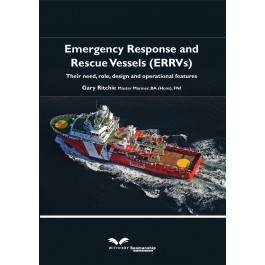Emergency Response and Rescue Vessels (ERRVs) "Their need, role, design and operational features"

Formato papel
[Sin existencias. Plazo de entrega breve]
PVP. 33,00€
Emergency Response and Rescue Vessels (ERRVs) "Their need, role, design and operational features"
FICHA TÉCNICA
- Editorial: Witherby Seamanship International
- ISBN: 978-1-85609-595-2
- Fecha de edición: 2013
- Idioma: Castellano
- Dimensiones:
0 cm x 0 cm
- Nº páginas: 61
- Materias: Seguridad, Medicina naval y supervivencia / Seguridad-Salvamento-Incencios-Supervivencia /
The importance of the emergency response and rescue vessel (ERRV) within the marine industry is often overlooked. This may be due to the fact that the role of the ERRV can appear to be limited to standby duties and emergency situations. However, the ERRV is a vessel that is actually utilised for many and varied tasks associated both with work onboard the installation to which it is assigned and within the general offshore environment. An ERRV may be required to perform routine standby duties during over side work from the installation or during helicopter landing and take-off operations, to perform in-field transfers or be assigned collision avoidance duties. All of these tasks require specific skills, training and levels of competence unique to the vessel type. Training, drills and exercises are, therefore, a major part of life onboard an ERRV, and the roles onboard demand a level of competence that is routinely and continually tested and assessed.
Routine operations may be performed in harsh weather conditions and the vessels must maintain station twenty four hours a day. Unlike other offshore support vessels, such as dive support vessels, platform supply vessels or anchor handling vessels, the ERRV is a constant presence at offshore platforms, semi-submersible drilling rigs and jack-ups. There is no respite from its duties and the vessel and crew must remain diligent, alert and in a constant state of readiness.
Formato papel
[Sin existencias. Plazo de entrega breve]
PVP. 33,00€
Libros Recomendados
-
[En stock. Entrega en 24 / 48 horas]
PVP. 24,00€



